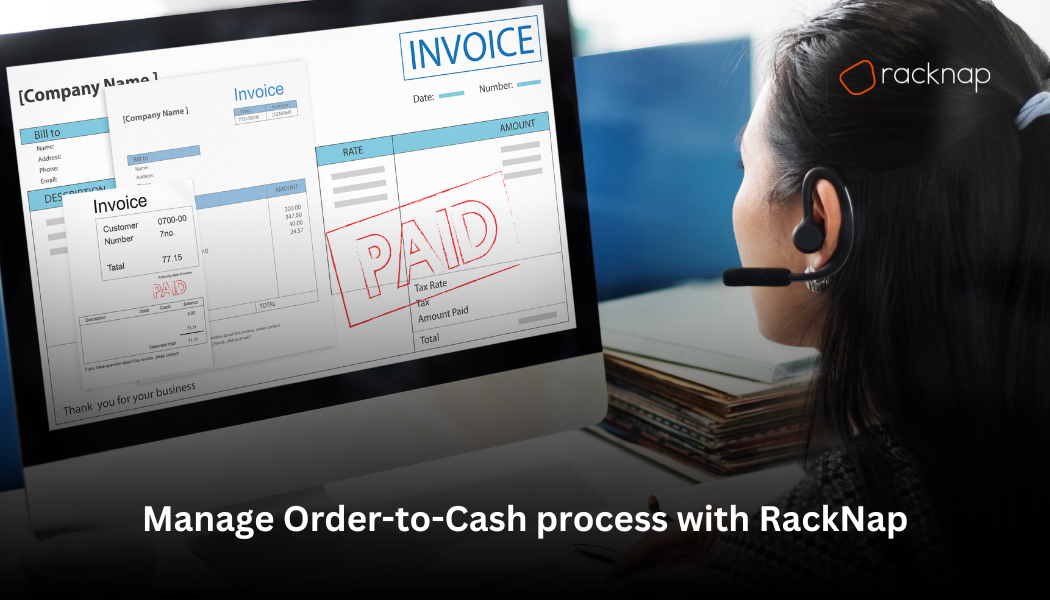An efficient Order-to-Cash (O2C or OTC) process is fundamental to business growth, particularly in building and maintaining strong customer relationships. When customers experience smooth transactions from ordering to delivery, they’re more likely to become repeat buyers and long-term customers. Businesses that optimize their OTC processes gain a competitive edge through stronger financial management and reduced operational costs.
In this blog, we will explore the fundamentals of the Order-to-Cash process and provide actionable insights to drive improved business outcomes. Let’s start.
What is Order-to-Cash Process?
The Order-to-Cash process is an end-to-end business cycle that covers all steps from when a customer places an order to when payment is received. This process begins with order management and includes essential activities such as credit assessment, fulfillment, shipping, invoicing, and accounts receivable management.
Effectively managing the OTC process is crucial for optimizing cash flow, improving customer satisfaction, and improving overall operational efficiency in a business.
If you’re grappling with billing issues, delayed order fulfillment, outstanding invoices, or unhappy customers, the underlying problem could stem from inefficiencies in your Order-to-Cash (OTC) process. A well-defined summary of the OTC cycle can empower your team to understand and tackle these challenges effectively. By leveraging the right tools, you can streamline operations, resolve issues, and enhance overall efficiency
Complete Process of Order-to-Cash Cycle
Each step in the OTC process is essential for ensuring customer satisfaction. Here’s a detailed explanation of each step:
Order Management
The process begins when a customer places an order, whether through your website or by contacting your sales team. Efficient order management relies on reliable software to simplify order processing and reduce errors. According to a recent IBM study, businesses implementing best-in-class Order-to-Cash (OTC) practices achieved an 81% improvement in order management efficiency compared to those that did not.
Credit Management
Before fulfilling an order, it’s essential to assess the customer’s creditworthiness, especially if the payment will be made on credit terms.
- For new customers, evaluate their credit history to determine eligibility.
- For returning customers with a strong payment history, orders can be processed quickly.
- For those with prior payment issues, additional evaluation is necessary.
Automating this process helps prevent payment delays and reduces financial risks.
Order Fulfillment and Shipping
This step involves delivering the product or service to the customer:
- For physical goods: Retrieve items from inventory and arrange for shipping.
- For digital products or software: Grant customers access, such as login credentials or downloadable content.
Efficient fulfillment ensures timely delivery and a positive customer experience.
Invoice Creation and Payment
Once the order is fulfilled, an accurate invoice is sent to the customer. It should clearly outline:
- Purchased items
- Applicable taxes and discounts
- Total amount due
Providing multiple payment options, such as credit cards, bank transfers, or digital wallets, simplifies the payment process and encourages timely payments.
Accounts Receivable and Reporting
The final step involves recording payments and analyzing financial data. This includes:
- Tracking incoming payments
- Identifying patterns, such as late payments or payment trends
- Generating data and insights to optimize cash flow and make informed business decisions
According to a recent KPMG report, 68% of high-performing organizations invest in intelligent automation to reduce costs and enhance efficiency. Efficient accounts receivable management helps detect potential issues early, ensuring smooth operations and stronger financial health.
Key Benefits of a Smooth Order-to-Cash Process
- Faster payment cycles
- Improved customer satisfaction
- Better cash flow management
- Stronger customer relationships
When each step of the OTC process is optimized, businesses can maintain healthy operations. However, inefficiencies in any step can lead to disruptions, strained customer relationships, and cash flow challenges. A well-executed OTC cycle is vital for sustained success.
Order-to-Cash Process for Subscription Models
While the fundamental OTC cycle remains consistent across business types, subscription-based businesses face unique challenges that transform how these processes operate. Let’s explore how the traditional OTC cycle adapts to subscription models and why automation becomes crucial.
The Recurring Nature of Subscription OTC
In a subscription model, each sale marks the beginning of an ongoing relationship rather than a single transaction. Unlike traditional one-time purchases, subscription orders automatically renew based on predefined intervals – daily, weekly, monthly, or annually. This continuous cycle creates a complex web of transactions that would be overwhelming to manage manually, making automation not just beneficial but essential for scalable operations.
Handling Subscription Complexities
The subscription model introduces several variables that impact the OTC cycle. Companies must manage setup costs, apply various discount structures, calculate usage-based prorations, process refunds, handle write-offs, and accommodate plan changes through upgrades or downgrades. Each of these elements requires careful tracking and proper accounting to maintain accurate financial records.
Contract Periods and Revenue Recognition
The contract structure significantly influences how the OTC cycle functions in subscription businesses. Monthly recurring orders follow a straightforward pattern, but longer-term contracts introduce additional complexity. Whether dealing with annual contracts paid upfront or those billed monthly, businesses must carefully manage revenue recognition. This often requires deferred revenue reporting to ensure compliance with accounting standards and maintain accurate financial statements.
For Example: When a customer signs a yearly contract with monthly payments, the OTC process must track both the billing schedule and the revenue recognition schedule separately. The system needs to recognize revenue month by month, even if the payment terms differ from the service delivery period. Similarly, for upfront annual payments, the revenue must be recognized gradually over the service period rather than all at once when payment is received.
This evolved form of the OTC cycle demands strong automation systems that can handle these complexities while maintaining accuracy and compliance. Successful subscription businesses rely on sophisticated software solutions that can manage recurring billing, track complex revenue recognition patterns, and adapt to changing customer needs throughout the subscription lifecycle.
RackNap: Your Comprehensive Solution for Order-to-Cash Management
RackNap simplifies and accelerates your Order-to-Cash process, empowering businesses to streamline operations, reduce manual inefficiencies, and optimize billing and invoicing—all on a unified platform. Designed to cater to the evolving needs of subscription-based businesses, RackNap ensures seamless order management, efficient financial workflows, and actionable insights to drive profitability.
With RackNap, you can achieve:
- Unified Order Management: Streamline subscriptions, usage fees, add-ons, and one-time charges with a single, integrated system for complete control and clarity.
- Efficient Invoicing and Financial Management: Automate proforma invoices, deliver final invoices seamlessly, and manage subscription changes with ease for optimal efficiency.
- Cloud Billing Intelligence: Leverage intuitive dashboards to monitor payments, renewals, and client ledgers, enabling smarter, data-driven decisions.
Take the next step towards transforming your Order-to-Cash process with RackNap. Take a demo today!
Read next: What are subscription bundles and how can it benefit your business?



